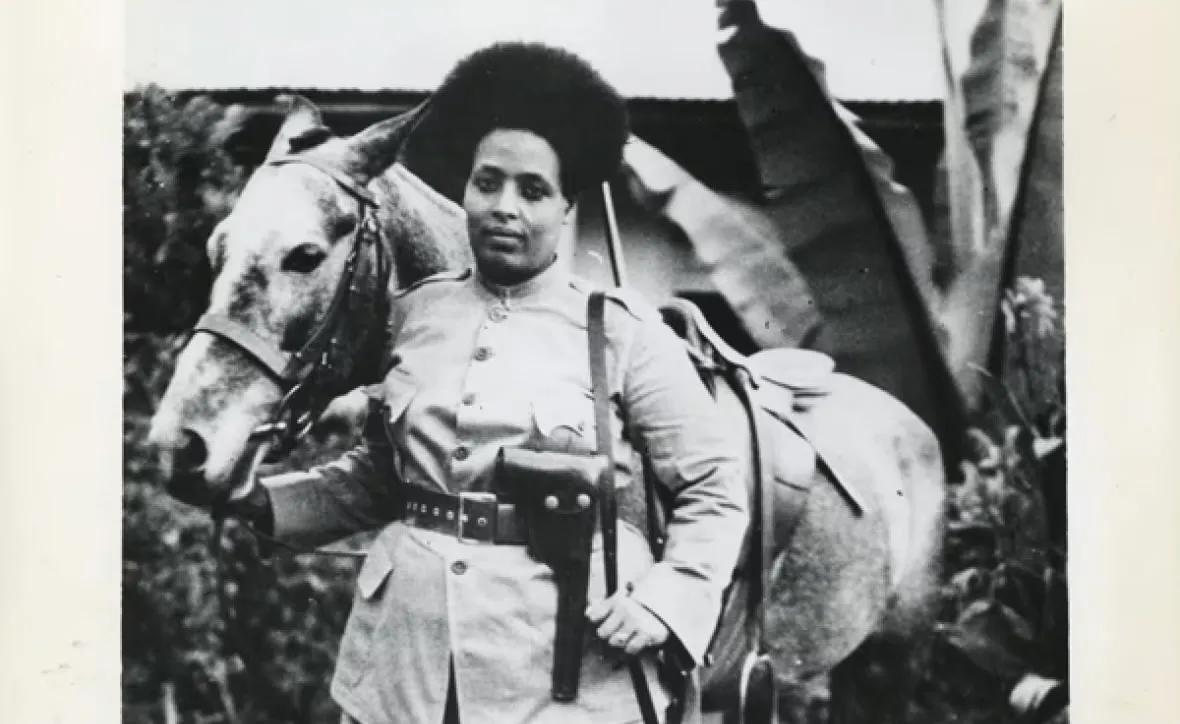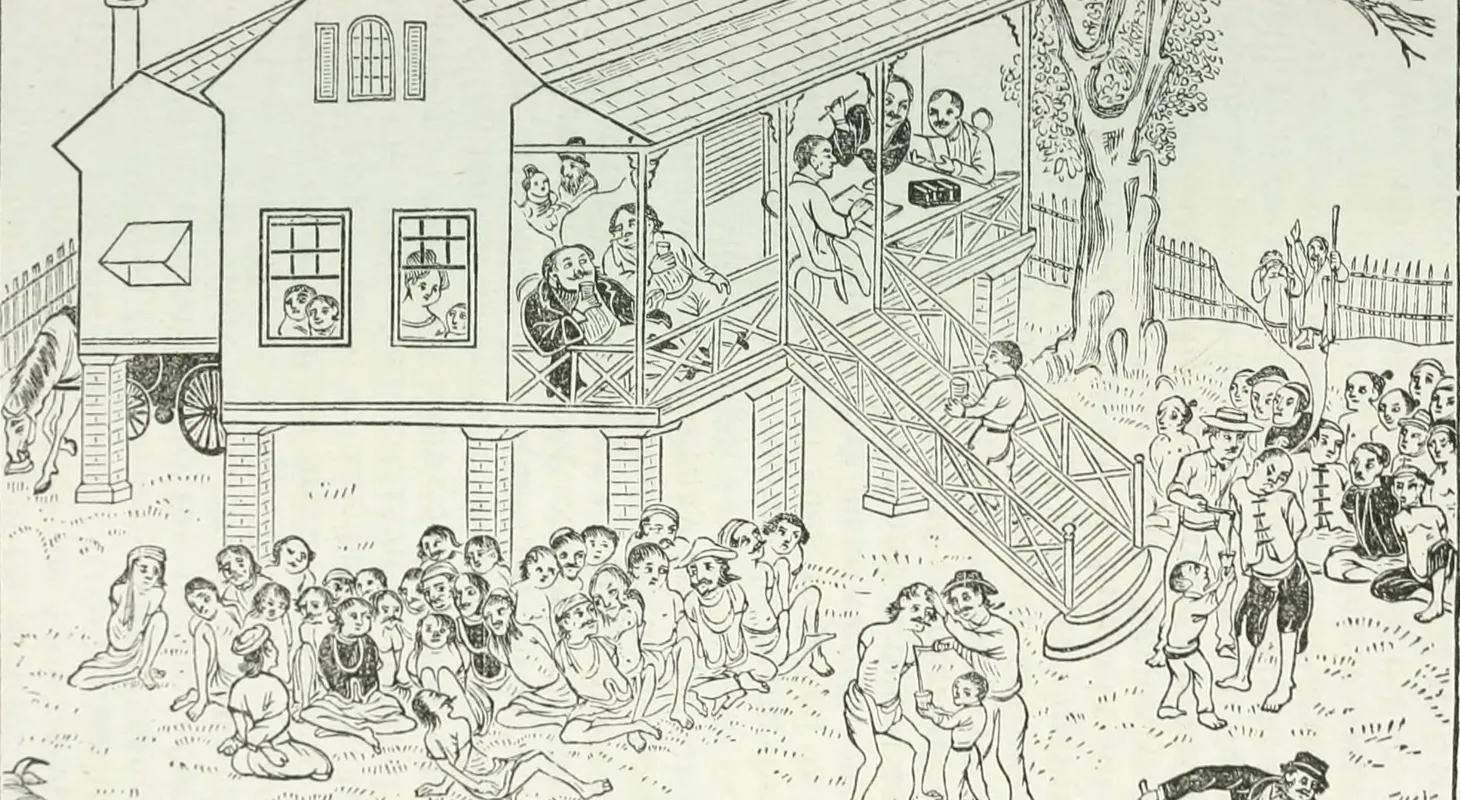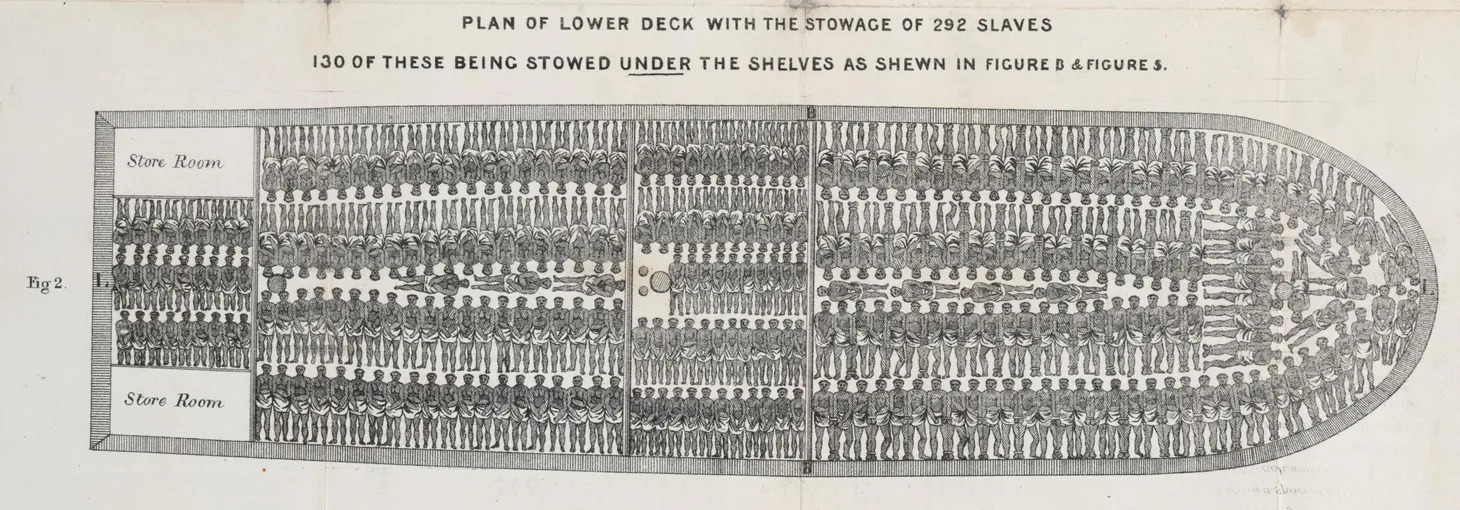Teaching World History in the Age of Black Lives Matter

Table of Contents
I remember listening to Nina Simone’s “Mississippi Goddam” on the night of 24 November 2014 when the grand jury chose not to indict Ferguson police officer Darren Wilson in the killing of Michael Brown. Her frustration and outrage at the murder of Medgar Evers resonated with me. It shocked me that Wilson was not indicted, and we needed to express our outrage at the injustice of the grand jury verdict. Yet, the teacher in me also wondered how I could address this issue in the classroom.
This past summer I read Ta-Nehisi Coates’ Between the World and Me. Coates’ story resonated with me given that I’m only a year older than him. I recalled many of the same cultural experiences. At the same time, I’m a middle-class, white male, and I didn’t share many of Coates’ emotions and reactions. I completely agreed with his views about race and racism in the United States, but I was unbelievably frustrated with his views about nonviolence as expressed in the book and in an article about the role of nonviolence in the Baltimore protests to the killing of Freddie Gray.
I’m aware that as a white, male American, I’m in a privileged position when it comes to thinking about nonviolence. I don’t regularly suffer violence against me because of my race or gender. I don’t feel that the country is set up to maintain this violence. Yet, I believe strongly in the power of nonviolence and education as a tool for bringing about justice in this world.
In thinking about these two reactions and my belief in the role of history, I wanted to share some relevant articles and ideas about how we can teach world history in an era of Black Lives Matter. According to the movement’s guiding principles:
It is an affirmation of Black folks’ contributions to this society, our humanity, and our resilience in the face of deadly oppression.
If Black Lives Matter is about affirming the contributions and the humanity of black peoples and teaching history should be a tool for justice, how we address and teach black subjects is crucial. I also believe it is important for me to engage my African-American students in my history classes. I don’t want to present a white or Eurocentric view of world history in which the experiences of Blacks are only marginally important. I want to present material and pose questions in a way that engages these students in my classes and encourages them also to see history as a tool for justice.
As a white man, I have also benefitted from an American society that is rigged in my favor. I need to be an advocate and an ally for all people in the way that Teju Cole talked about men being an ally for women. I need to speak out simply because of how much I have benefitted. At the same time, I want to avoid presenting myself as part of the “white-savior industrial complex.” I’m here to help all students understand history in a nuanced and complex way that is honest about past injustices, incorporates the stories of all peoples and helps empower students to see themselves as agents of change in the world.
A Note on Language
Before I go any further, I want to say a few words about the terminology in this post. In using both “Blacks” and “African-Americans,” I’m distinguishing between racial and ethnic categorizations. Blacks refer to a racial category that while socially constructed is very much real for billions of people around the world. It’s the same for Whites, although my racial category has been constructed from a position of dominance. African-Americans refers to an ethnic categorization that reflects the African heritage of black Americans. In the context of world history courses, we are frequently teaching and learning about the experiences of black people around the world. African-Americans only refers to those black people who live in the United States. I’m also switching between Blacks (with an upper-case B) and black (with a lower-case b) to distinguish between the racial group and the adjective used in association with that group. Much has been written about this issue of capitalization, and I’m open to changing my practice. For now, I’m following the lead of many news publications while also trying to reflect the concerns of the people involved. Another important distinction relates to the topic of slavery. Instead of dehumanizing millions of people as “slaves,” I will talk about “enslaved peoples” or “enslaved Africans.” It seems a relatively small difference, but it is an important step in restoring people’s identity. We are trying to honor the guiding principles of Black Lives Matter.
Incorporating the Histories of African Peoples
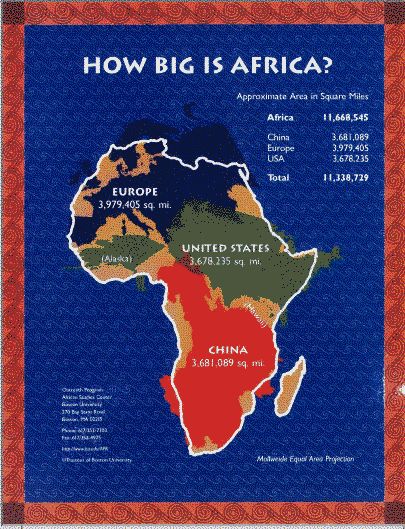
As the map makes clear, Africa is not a small region. Think about how much time we devote in our world history classes to the histories of China, Europe, and the United States compared to the time and treatment of the history of Africa. As teachers, we need to be aware of these choices we are making. Boston University’s African Studies Center offers some excellent lessons about our perceptions and projections of Africa. Given the sheer size of Africa, it is important that we don’t talk about the diverse peoples of Africa as a single, homogenous group. We need to talk about Africa’s diversity and its histories. We also want to be mindful of the language we use in the classroom to describe Africa and Africans. Binyavanga Wainaina’s “How to Write about Africa” is a satirical essay about the tendencies of many writers to exoticize and caricature Africans.
One of the easiest ways to incorporate African histories into our world history classes is the history of West Africa. Well before Europeans arrived in Africa, three large and important kingdoms arose in West Africa: Ghana, Mali, and Songhay. Most textbooks cover this topic. These kingdoms were closely involved in the Afro-Eurasian economy before 1450 and were important centers of learning. In addition to the resources found in most textbooks, there is the Michigan State University module exploring these kingdoms and the Crash Course World History episode on them.
The other region of Africa that I always make a point to cover is the East African Swahili Coast. During the period from 600 C.E. to 1450, the cities of the Swahili Coast prospered as important trade centers in the Indian Ocean network of exchange. The Swahili people also were involved in significant cultural exchange with other peoples around the Indian Ocean and with the peoples from the interior of Africa. Dave Eaton, of the On Top of the World: A World History Podcast, recently published some excellent ideas about teaching the Swahili Coast.
By incorporating the multiple histories of African peoples prior to the arrival of Europeans in the fifteenth century, Africans are not relegated to a secondary role whose importance only seems to matter after Europeans arrived on the scene.
The Trans-Atlantic Slave Trade and Slavery in the Americas
The transition from thinking about the history of Africans to the history of African-Americans begins with the trans-Atlantic slave trade and slavery. This topic is one that is usually included in most world history classes, but how we frame and approach the topic is central to honoring the guiding principles of Black Lives Matter. There are a number of ways that we can approach the slave trade, especially given that it lasted nearly 400 years. It’s also important to keep in mind that the slave trade was a global phenomenon. It also occurred within the Indian and Pacific Oceans.
The obvious starting point is the trade itself and how we present the nature of the exchange. Instead of presenting the trade from a European perspective, we want to teach about the slave trade as a process of negotiation involving multiple groups of Africans and Europeans. When Europeans first began to trade for African slaves, most Europeans were at a competitive disadvantage. They were far from home, had relatively few items that Africans wanted, and frequently had to adapt to the demands of African traders. One of the key sources for looking at the slave trade is the journal kept by Captain Thomas Phillips’ during the voyage of the Hannibal in 1693.
In his journal, Phillips is surprisingly frank about how much he was at a disadvantage. He describes being unable to resist the ruler of Whydaw’s “request” that the English traders attend him that night. He also describes the way in which the ruler was able to insist that his own lot of enslaved Africans had to first be purchased by Phillips at inflated prices. The actual negotiations between Phillips and the African slavers show again that Africans tended to have the upper hand in these exchanges. African traders attempted to hide enslaved people’s advanced age or physical ailments. And when it came time to pay for the slaves, the African traders could also insist on being paid in cowry shells from the Indian Ocean, their preferred form of currency, rather than European goods. It quickly becomes clear that Africans played more than just active roles in the selling of African slaves; African traders shaped the patterns of exchange. Another important lesson from looking at this source is how it shows a variety of Africans involved in the slave trade. Some Africans are rulers, some are traders, and some are enslaved. There is not just a mass of homogenous Africans.
The second issue to consider in our teaching of the slave trade is the Middle Passage itself. It goes without saying that we must be honest about the violence and brutality of the voyages and how enslaved Africans were treated. Phillips’ own journal is open about the harsh conditions on the ship, the willingness of slavers to use violence to maintain order, and the number of Africans who died en route. We can pair these descriptions with similar ones from the journal of Olaudah Equiano, a former enslaved African, to present an African voice about the Middle Passage. Even with the frank and disturbing language about the violence and horrors of the Middle Passage, we can also show choices of Europeans made the experience even more hellish and dehumanizing for Africans. In a recent post, Antoine Vanner describes the sinking of the slave ship Phoenix in 1762. It’s not a pleasant story, but its honesty makes clear how brutal the slave trade was for enslaved Africans. We need to be open and honest about the ways that Europeans participated in the slave trade and not gloss over the disturbing aspects.
I believe a similar approach should also be followed when teaching about the experience of slavery in the Americas. Although the conditions of slavery varied in different parts of the Americas, we can make some generalizations about the ways in which chattel slavery (the type of slavery practiced in the Americas that differed from many earlier forms of slavery) functioned. Instead of presenting an idealized or partial view of the experiences of enslaved Africans, we should present the full and complete story, as many historical sites related to slavery are beginning to do:
Bringing the history of slavery and oppression alive, though, can be uncomfortable for some visitors, and a challenge for interpreters, he noted.
“It’s a very hard subject to present,” he said. Guides must strike an appropriate balance between hospitality, enthusiasm, seriousness and respect. And visitors must be willing to open their minds to entertain not only the horrors of slavery but the institution’s many nuances: the fact that the North was complicit, for example, or that some slaves actually enjoyed varying degrees of autonomy and esteem.
No historical site does a better job of presenting the truth about slavery than the recently opened Whitney Plantation outside New Orleans. While it’s impossible for everyone to visit this site, its rich website provides a wealth of material about the conditions on the plantation and all the people involved.
Just as we want to be honest about the experience of slavery, we need to also be open and honest about the ways that many people, especially Europeans, profited from owning and trading enslaved Africans. Eric Williams, in Capitalism and Slavery was one of the first historians to argue about the economic benefits derived from slavery and how it contributed to British industrialization. More recently, Edward Baptist, in The Half Has Never Been Told: Slavery and the Making of American Capitalism has expanded on Williams’ work to show the extent to which the present-day economic system in the United States has been shaped by slavery. Sven Beckert, in Empire of Cotton: A Global History has also recently looked at the effects of cotton, much of which was grown on slave plantations. All three books help us to understand the ways in which the labor of enslaved Africans has benefitted white Europeans and the American and British economies. Not only do we present a more accurate picture of history, we do so in a way that at least acknowledges the crucial contributions of enslaved Africans to these economies.
The last aspect of the slave trade and slavery that I want to consider is how we present the abolition of these horrific institutions. The story of abolition can sometimes be told in a way that allows Britons and Americans to feel better about their involvement in slavery and the slave trade. In a recent podcast about her work, Katie Donington talks about her research into the records of reparations that the British government paid to the owners of slaves. Some of her key arguments are the surprising extent of how many Britons owned slaves and how much they were compensated to give up those slaves. Even in abolishing the institution of slavery, many Britons benefitted financially. Meanwhile, the formerly enslaved Africans rarely received any compensation. And now fourteen Caribbean states are suing Britain for reparations from slavery. Teaching the story of abolition is a complex one in which we again need to be mindful of who did and didn’t benefit financially.
Another important aspect of the story of abolition is the actions of enslaved Africans themselves. Nowhere is this involvement more obvious than in the Haitian Revolution.
“Where negritude rose to its feet for the first time and said it believed in its own humanity.”
This line from Aimé Césaire’s Return to My Native Land makes clear how important the Haitian Revolution was. It not only showed us the active role that Blacks, both enslaved and free, played in ending slavery in the French colony of Saint-Domingue, but it also compliments the stories we tell about the American Revolution and marks a radical challenge to white Europeans’ ideas about their colonies in the Americas.
There are many ways to approach the teaching of the Haitian Revolution, but I believe we must give at least equal coverage of the event as we do for the other Atlantic Revolutions (North American, French, and Spanish American) in our world history courses. Choosing to emphasize the North American or French Revolutions more sends a subtle message about the lesser importance of the event. One way I became aware of this problem in my own classes was after reading about Julia Gaffield’s rediscovery of an original copy of Haiti’s Declaration of Independence. I realized that while I had students read the American Declaration of Independence, the French Declaration of the Rights of Man and Citizen, and Simon Bolivar’s “Jamaica Letter,” I didn’t include a foundational document for the Haitian Revolution that allowed the revolutionaries to speak for themselves. The full text of the Haitian Declaration is available online, so there’s no reason not to incorporate it into our classes.
Another approach to teaching the Haitian Revolution in a more meaningful way is examining the broader significance of the event. Discussions about the significance of the North American Revolution are familiar topics in almost any history class in the United States. Brandon Byrd has written a short post about the significance of the Haitian Revolution for African-Americans in the United States. Byrd shows how both free and enslaved African-Americans in the nineteenth century understood and made sense of the Haitian Revolution. Another way to consider the significance of Haiti is to explore what it meant in other plantation colonies around the Caribbean. In a recent book, Ada Ferrer examines the effect of the Haitian Revolution on nearby Cuba and its transformation into a more intensive plantation colony. Samuel Farber has published a shorter review of Ferrer’s Freedom’s Mirror: Cuba and Haiti in the Age of Revolution that could easily be used in the classroom.
Exploring the Haitian Revolution more in our world history classes is one of the key ways that we can honor those guiding principles of Black Lives Matter. We not only show the truly radical nature of the Revolution, but we also humanize the Blacks of Haiti and show their valuable contributions to the Atlantic World at the same time as the North American and French Revolutions.
Imperialism in Africa and the Black Atlantic
Another common topic in world history courses is late nineteenth and early twentieth-century imperialism. It’s easy for us as teachers to think about how we frame the topic and what we are doing in our classes to make the topic meaningful to African-American students.
I’m guessing that I’m similar to many other teachers in that I begin my coverage of imperialism by having students examine the motives and methods of European and American imperialism before looking at the processes by which Europeans and Americans began to conquer and assert control over peoples around the world. One of the activities that I have frequently encountered is the “Scramble for Africa” simulation. A quick search on Google will reveal hundreds of links to this activity that has students recreate the Congress of Berlin (sometimes called the Berlin Conference) of 1884–1885. Students are divided into groups representing the major European powers at the Congress. (On a side note, most versions of this activity seem to leave out the United States and the Ottoman Empire, both of whom were also participants.) The students then take turns “claiming” parts of Africa and dividing up the continent. Some of the descriptions of this activity then mention the need for debriefing and discussion about the effects of this process on the peoples of Africa.
Putting aside the question of the validity of historical simulations themselves, I have always cringed when reading about this activity. In February 2015, I shared some of my thoughts about this activity on a private Facebook group devoted to Advanced Placement World History, and it produced an extensive conversation. Without going over the whole incident again, I want to highlight some of my concerns with this activity. I worry about activities like the “Scramble for Africa” simulation that turn historical events into games. This activity focuses exclusively on the role of Europeans and marginalizes the peoples of Africa. And unless we make sure to have a substantive debriefing process, I worry about the possibility of omitting any discussion of the effects of the partition of Africa.
One way to reframe how we teach the partition of Africa is to discuss openly who was involved in the process and what its effects were. In this contemporary German illustration of the conference proceedings, we can see who was at the conference.
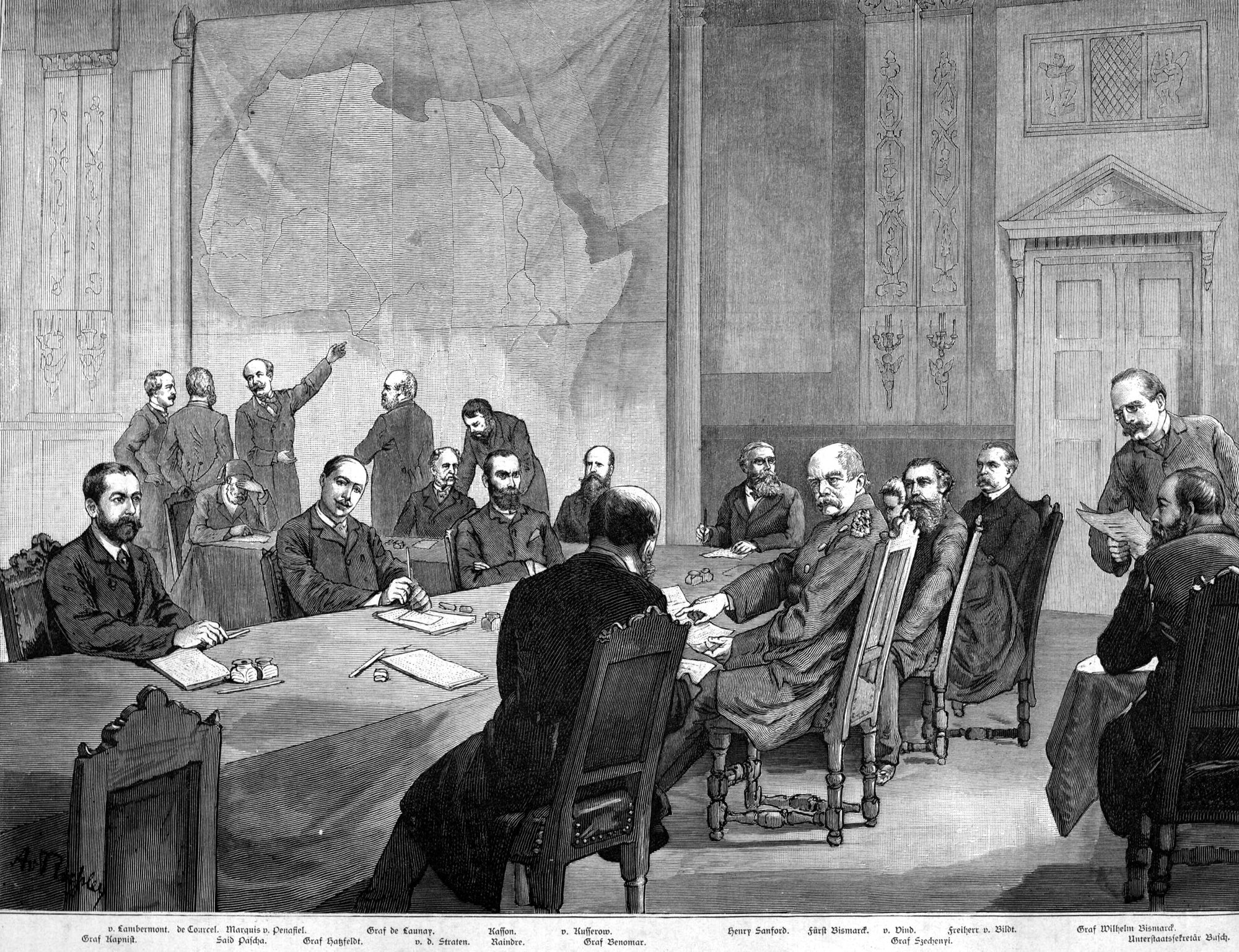
I ask students to tell me who was at the table and what does the map on the wall suggest. I also ask them to think about who was not at the conference or about the person in the lower left corner. These questions make clear and transparent exactly who was involved in the process of partition and who was not. I follow up this discussion with a close examination of a series of maps depicting Africa’s ethnic groups and the newly established imperial boundaries. Azure Gilman has published a short piece on the Freaknomics blog looking at this same issue and connecting it to violence in Africa. The European established borders of Africa paid little attention to where different ethnic groups in Africa actually lived.
Another important way in making this material meaningful to African-American students is to think about the active role of Africans in the process of imperialism. In a recent podcast about their new book Empires and Colonies in the Modern World, Heather Streets-Salter and Trevor Getz discuss the issue of imperial collaborators and resisters. Getz emphasizes the problem of presenting these groups as binary opposites. Instead of falling into that trap, we can help students see how many peoples in Africa actually worked with Europeans in the process of imperialism. Students hopefully will see Africans not as simple, passive actors who were the victims of European imperial activities, but as people who actively shaped the process of imperialism.
I like to include a discussion of American imperialism when teaching European imperialism. It helps students to see that while most Americans don’t think of their country as an imperial power, the policies of the United States in the late nineteenth and early twentieth century looked remarkably similar to European imperialism. I focus on the United States’ invasion of Haiti in 1915. The United States then maintained an occupation of Haiti until 1934 using the Marines. To mark the 100th anniversary of the invasion, Brandon Byrd published a series of short blog posts about the invasion and occupation that can be used in the classroom. In the two that I find most useful, he discussed the initial invasion and occupation and the reaction of the African-American community in the United States. He also published a useful bibliography of the United States’ occupation of Haiti.
Another aspect of imperialism to consider is the process of decolonization. Instead of focusing too much on the reasons that Europeans chose to let go of their colonies in Africa, we can focus the discussion on how Africans fought for their independence. The two key figures I include in these discussions are Kwame Nkrumah and Patrice Lumumba. Nkrumah’s speeches are a useful source for showing the ways in which Africans worked to gain independence and the idea of pan-Africanism. His “I Speak of Freedom” speech is a good example of these issues. Patrice Lumumba also discussed these issues in his 1958 “Speech at Accra” and his 1959 “African Unity and National Independence” speech.
Part of the reason that I include Lumumba and Nkrumah is to show how even as African leaders had played active roles in fighting for independence, Europeans and Americans ended up also killing or helping to overthrow many of these same leaders. By highlighting the violent ways that Americans and Europeans continued to be involved in the affairs of Africa after most countries had gained their independence, we help students to understand part of the reasons that many African countries continue to suffer from political instability. We can also connect this topic to the Americas as well in looking at the United States’ continued involvement in Haiti after the end of its occupation in 1934. Laurent Dubois’ short article on the Duvalier years in Haiti makes clear that the United States supported the brutal regimes of Jean-Claude and François Duvalier in the belief that they prevented the spread of communism to Haiti.
In looking at the broad topic of imperialism, it may seem that I have chosen to simply emphasize the brutal and violent practices of Americans and Europeans while highlighting the ways in which Blacks fought for independence or resisted Western imperialism. There are obviously many examples I could provide as a counterpoint to this pattern (the Duvaliers in Haiti definitely brutally exploited the Haitian people). In thinking about the guiding principles of the Black Lives Matter movement, I have wanted to focus more on the oppression and the ways people resisted that oppression.
Blacks in the World Wars
Most modern world history courses include some discussion of the First and Second World Wars. Thinking about how we teach these wars presents another opportunity to address the guiding principles of Black Lives Matter in our classes.
The first way is to think about which regions are being discussed in teaching about the wars. I know that myself I used to focus mostly on Europe, with little attention paid to the involvement of the United States and East Asia. I’ve recently made more of a point to incorporate the role of Africa and how the wars affected Africa in my classes. Jacques Enaudeau and Kathleen Bomani published an article about taking advantage of the centenary of World War I to reconsider how we include Africa in the war. The British Council has put together a series of articles about the role of different regions in World War I. Daniel Steinbach has written about the way in which the First World War was misremembered in East Africa. Kwei Quartey has written about the important role of West Africa in helping the Allies win the Second World War.
In thinking about these wars, we can also focus on the important roles of African-Americans in these wars. By the time we are teaching about twentieth-century events, we frequently incorporate more pictures in our discussions. Choosing to use photos of African-American soldiers may seem a minor change, but it’s also another way to address those guiding principles of Black Lives Matter. The New York Public Library has a rich site with a useful essay about and a number of photos of African-Americans and World War I. The National Archives has a rich collection of audiovisual records of African-Americans during World War II.
In looking at the role of Africans and African-Americans in World War II, we can help students see how black people around the world were actively involved in shaping these two major wars of the twentieth century. If we are going to continue insisting on calling these wars “world wars,” let's make sure that we actually show how the whole world was involved in these wars.
Remaking Black Identity in the Twentieth Century
The last topic I want to consider is one that is less frequently taught, but I think it is most relevant to how we teach world history given the principles of Black Lives Matter. In his The World: A History Felipe Fernández-Armesto discusses the radical social changes, especially those related to ethnicity and race, of the twentieth century. At the beginning of the century, European ideas about racial hierarchies based on scientific racism were common around the world. Because of imperialism, Europeans controlled much of the world, and they promoted these racial hierarchies. Over the course of the twentieth century, many racial and ethnic groups challenged these hierarchies and characterizations of their groups as inferior to white Europeans.
Black people in both Africa and the Americas presented an entirely new and more positive depiction of people of African descent. Some of the more well-known individuals and groups include Marcus Garvey, Langston Hughes and the Harlem Renaissance, Frantz Fanon, Aimé Césaire and Negritude, Pan-Africanism, Malcolm X and the Nation of Islam, and the Rastafarian movement. By linking these people and groups together, we are able to show how black people in the twentieth century not only challenged European ideas about their racial inferiority, but also presented a new, more positive image of Blacks. Connecting African-Americans from the United States to individuals from the Caribbean and Africa also highlights the interconnected nature of the history of Blacks. The stories and experiences of African-Americans from the United States become interwoven with the experiences of black people around the world in the twentieth century. One of the key resources I like to use in teaching this topic is the previously mentioned Aimé Césaire’s Return to My Native Land. In this poem, Césaire himself links the experiences of black people throughout history and around the world.
Conclusion
In surveying these six topics, I hope I have provided some guidance and suggestions about how we can rethink some of the standard topics that we already teach in our world history courses. By consciously choosing to incorporate more stories about black people, we not only address the guiding principles of the Black Lives Matter movement, but we also present a more accurate version of history and begin to address the injustices in this world in a nonviolent manner. And maybe we can begin to construct a society based on the principles of nonviolence that also appeals to Coates.
Liberating Narratives Newsletter
Join the newsletter to receive the latest updates in your inbox.

